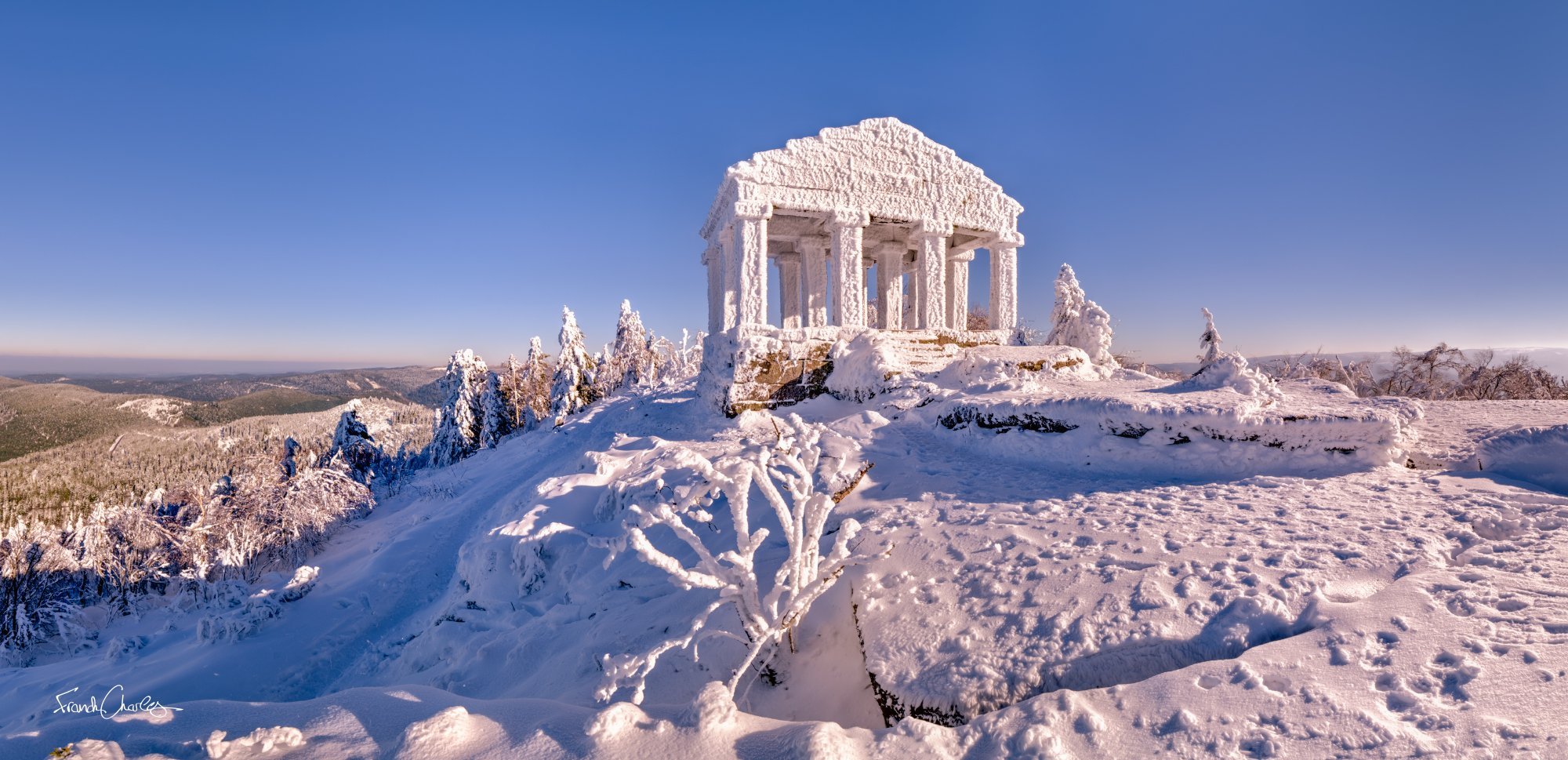Mont Donon (the sacred mountain) is the highest peak in the northern Vosges. Many archaeological remains of a Gallo-Roman sanctuary have been found on and around the mountain top. They are now exhibited in the Musée archéologique de Strasbourg.
The summit, where the temple of Donon is erected, reaches 1,008 meters above sea level. It dominates the Bruche valley from almost 700 meters, which gives it the appearance of a very high peak with a trapezoidal profile, visible from the Hautes Vosges, where it has long been identified as the peak of the Vosges.
A building imitating a Greco-Roman temple was erected at the top in 1869 to house various archaeological finds. It is the work of the architect Louis-Michel Boltz, and doctor Bédel, being the initiator. The temple in its rusticity presents an indisputable character. Four pillars ( monoliths of square section), two spans deep, support a heavy roof of stone slabs of the “load pile” type. A certain megalithic inspiration inspires this construction. This "temple" nevertheless remains the emblem of this place.
During the annexation of Alsace-Moselle in 1871, Bismarck obtained 1,000 hectares of forest from the territory of Raon-lès-Leau to secure control of the strategic summit. In 1919, during the Treaty of Versailles , this estate remained the property of the commune of Grandfontaine , to the chagrin of the commune of Meurthe-et-Moselle.
Set of stones forming a circle at the base of the climb to the temple.
Le Donon experienced early national and religious fame, with its archaeological remains, the reconstruction at the end of the Second Empire of a high Gallo-Roman temple, its numerous excavations including that of the university and Strasbourg, with Jean-Jacques Hatt , memorable of the year 1938. So much so that the highest point of the sandstone Vosges could only be the Donon, at least in school textbooks dealing with the French geography of eastern France, even after the return from Alsace- Lorraine.
On June 24, 1940, after the military operations that had taken place the previous week and the retreat of the French troops on the ground, the 279th infantry regiment positioned itself at the top of the Donon, which it made "an impregnable fortress", according to General Order No. 76 of the 43rd French Army Corps signed by General Lescanne.













